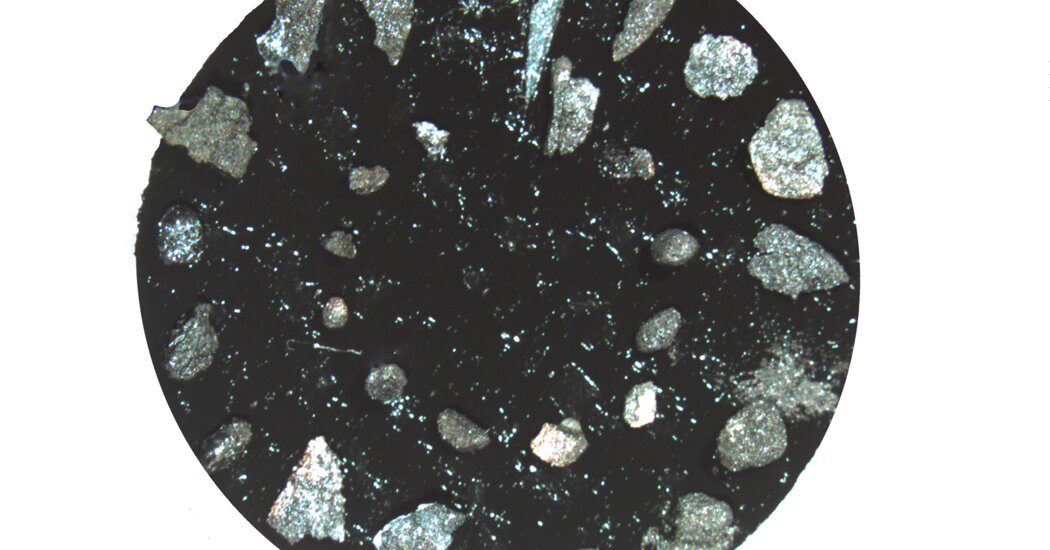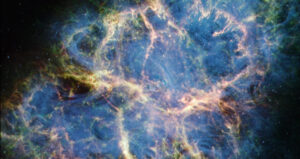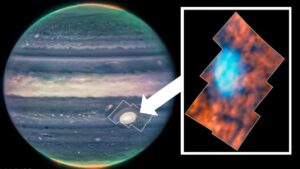The oldest evidence of a forest fire in the world can be found in a laboratory on the fourth floor of a brick building in Waterville, Maine. To the untrained eye, it looks like a speck of black moss, not much bigger than the tip of a pin. According to Ian J. Glasspool, a paleobotanist at Colby College, it’s a 430-million-year-old piece of coal.
The specimen that Dr Glasspool found in mudstone from South Wales is one of many pieces of ancient charcoal that have been examined in recent years to investigate how fires burned in the past. Together, these remains help scientists understand how fires formed and were shaped by environmental changes over geologic time.
“They’re annoying looking things,” said Dr. Glasspool, holding up a sample encased in a small disc of resin. “But there’s a whole heap you can get out of.”
These ancient insights may not help us manage individual wildfires today, Dr Glasspool said. But they can provide a clearer picture of the global phenomenon of fire and how it shapes Earth’s climate. This, in turn, can help modelers make more accurate predictions of future climate.
“The geological record shows it’s much more complex than ‘it gets hot, there’ll be more fires,'” said Jennifer M. Galloway, a paleoecologist with the Geological Survey of Canada. Dr. Galloway recently published an article in the journal Evolving Earth on the merits of studying ancient wildfires as a way to understand climate dynamics today.
Fire is a relatively recent phenomenon in Earth’s 4.54-billion-year history. For more than 90 percent of that timeline, the planet’s atmosphere and continents lacked the oxygen and ignition needed to sustain a flame. Lightning strikes might have charred bits of microbial mat here and there, but the burning would be short-lived; smoke and embers were almost absent. It wasn’t until plants appeared on land about 458 million years ago that sustained burns—and eventually the geological record of fires—became possible.
The earliest fires didn’t burn forests that were still there millions of years ago, but simpler plants like mosses and liverworts. “We’re talking about things that you can generally walk through and they won’t even wet the tops of your boots,” Dr. Glasspool said. An enigmatic group of larger growths called nematophytes also dotted landscapes at the time, and they may also have helped ignite the earliest flames, he added.
To study the remains of these ancient fires, Dr. Glasspool first dissolves his rock samples in acid and then sifts through the tiny black spots left behind. To manipulate and orient each spot for analysis, he uses a wooden skewer that has a whisker from his cat Bingo taped to the end.
“Low budget, DIY,” he said in February in his lab. If he uses a store-bought paintbrush, his small samples may get caught in the bristles; Bingo’s mustache gives him more control.
Viewed with an ordinary light microscope, these coals reveal the marbled cell walls that were preserved primarily by the act of charring. This process burns all volatile organic materials and leaves only inert carbon that can remain unchanged for hundreds of millions of years.
Charcoal has a distinct silky sheen that distinguishes it from coal, another form of carbon, which appears duller under a microscope.
By tracking the abundance of charcoal at different intervals in the rock record, Dr. Glasspool and his colleagues have identified patterns of fires that occurred during past periods of global warming. He and his team found a fivefold increase in carbon in 200-million-year-old sedimentary rocks collected in East Greenland. This period marks the end of the Triassic, when intense volcanism raised global temperatures by about 6 degrees Celsius and led to one of the worst mass extinctions in Earth’s history.
In 2010, Dr. Glasspool’s team reported that increased atmospheric heat may have increased wildfire activity in a number of ways. For example, the heat may have generated thunderstorms with more frequent lightning strikes, the leading natural cause of wildfires both in the past and today. Just 1 degree Celsius of warming could increase the number of lightning strikes by around 40 percent, according to a study by Imperial College London. This may partly explain why wildfires were so widespread at the end of the Triassic, Dr Glasspool said.
The fossil record also shows that plants with small, narrow leaves became more common as temperatures rose, while species with wider leaves largely disappeared from the landscape. This, his team reported, is most likely a response to heat, as smaller leaves can shed heat more easily than larger leaves.
Small-leaved species would cause more intense fires, just as torn pieces of paper burn faster than intact ones. “They dried faster and were more flammable,” Dr Glasspool said.
More fuel plants, more smoke, and more carbon dioxide in the atmosphere would further warm Earth, perhaps fueling more fires, more vegetation changes, and more intense thunderstorms—a positive feedback loop not unlike what appears to be playing out today .
Rock data provide insight into how long ecosystems may take to recover from such shocks. Deposits from the end-Permian mass extinction—a period of warming about 252 million years ago that marked the greatest loss of life in Earth’s history—suggest that the charred wetlands took millions of years to recover from drying out and burning.
“Let’s hope we don’t have to do this again,” said Chris Mace, a paleontologist at University College Cork in Ireland who published research on these deposits in 2022.
Modern global temperatures have risen much less than they did then – just 1.1 degrees Celsius since 1880, compared with about 10 degrees Celsius during the tens of thousands of years of the end-Permian extinction. But the pace of change today far exceeds that of the past. This rapid warming has already made wetlands more prone to fire: South America’s Pantanal region, 42 million acres of tropical wetlands, has begun to burn seasonally at alarming rates. Late Permian deposits offer a sobering look at what could happen if climate change continues unabated.
“There are a bunch of levers we can pull to prevent it from getting this bad,” Dr. Mace said. “But we use it as an absolute worst-case scenario.”
Shawn Parks, a research ecologist with the US Forest Service at the Rocky Mountain Research Station in Missoula, Montana, noted that the extent and severity of such fires are also a result of human behavior and land-use practices, not just change. of the climate.
Still, Dr. Parks said, studies of the geological record and ancient climate patterns can help improve global climate models that inform land management decisions: “It’s interesting and excellent background information.”
Fernanda Santos, a scientist at Oak Ridge National Laboratory in Tennessee who studies modern-day fires in Alaska and works closely with climate modelers, agreed.
“I really value ancient data because it can give us this new perspective and a new baseline,” Dr. Santos said.



